26 Different Animals Found in the Mountains with Pictures and Facts
Imagine standing at the base of a towering mountain. What animals do you think live up there?
Mountains are home to some of the most incredible creatures on Earth.
These cool creatures have super-special tricks to survive where the air is thin, and the rocks are steep.
From furry climbers that can scale nearly vertical cliffs to birds that soar higher than airplanes, mountain animals are some of our planet’s toughest and most fascinating beings.
They brave icy winds, deep snow, and rocky terrain that would make most of us say, “No way!”
So, brace yourselves and set off on an adventure to discover these remarkable mountain dwellers.
1. Snow Leopard

Snow leopards are large cats native to the mountain ranges of Central and South Asia.
They are known for their beautiful, thick fur, which is patterned with rosettes and spots.
Their powerful build and long tails help them navigate the steep and rugged terrain of their habitat.
| Height | 22 to 25 inches (56 to 63 cm) at the shoulder |
|---|---|
| Weight | 60 to 120 pounds (27 to 55 kg) |
| Region of Habitat | Central and South Asia |
| Scientific Name | Panthera uncia |
| Place of Origin | Mountain ranges of Central and South Asia |
| Feeding Habits | Carnivorous |
| What Sound They Make | Roar, growl, hiss |
Fun Facts:
- Snow leopards have large nasal cavities that help them breathe in the thin, cold air of high altitudes.
- They can leap up to 50 feet in one bound.
- Snow leopards are solitary animals and have a large territory range.
2. Mountain Goat

Mountain goats are large, hoofed mammals known for their agility and sure-footedness on steep, rocky slopes.
They have thick white fur that helps them blend into their snowy surroundings and stay warm in cold climates.
| Height | 35 to 45 inches (89 to 114 cm) at the shoulder |
|---|---|
| Weight | 100 to 300 pounds (45 to 136 kg) |
| Region of Habitat | North America |
| Scientific Name | Oreamnos americanus |
| Place of Origin | Rocky Mountains and other North American ranges |
| Feeding Habits | Herbivorous |
| What Sound They Make | Bleat |
Fun Facts:
- Mountain goats have specialized hooves with a rough pad that provides grip on rocky surfaces.
- They are excellent climbers and can scale slopes over 60 degrees steep.
- Both male and female mountain goats have beards and horns.
3. Andean Condor

The Andean condor is one of the largest flying birds in the world, with a wingspan that can reach up to 10 feet.
It has a black body with white feathers around its neck and large, powerful beaks suited for scavenging.
| Height | 33 to 51 inches (84 to 130 cm) |
|---|---|
| Weight | 20 to 33 pounds (9 to 15 kg) |
| Region of Habitat | South America, particularly the Andes Mountains |
| Scientific Name | Vultur gryphus |
| Place of Origin | Andes Mountains |
| Feeding Habits | Scavenger primarily feeds on carrion |
| What Sound They Make | Hissing and grunting noises |
Fun Facts:
- Andean condors can live up to 70 years in captivity.
- They have excellent eyesight that allows them to spot carrion from great distances.
- Andean condors are considered a symbol of power and health in Andean cultures.
4. Himalayan Tahr

Himalayan tahrs are large ungulates that inhabit the mountainous regions of the Himalayas.
They have a stocky build, thick reddish-brown fur, and curved horns that are found in both males and females.
| Height | 26 to 40 inches (66 to 102 cm) at the shoulder |
|---|---|
| Weight | 60 to 90 pounds (27 to 41 kg) |
| Region of Habitat | Himalayan Mountains |
| Scientific Name | Hemitragus jemlahicus |
| Place of Origin | Himalayas |
| Feeding Habits | Herbivorous |
| What Sound They Make | Bleat |
Fun Facts:
- Himalayan tahrs are excellent climbers and can navigate steep, rocky terrains with ease.
- They are social animals, often found in groups called herds.
- Males have longer, thicker fur than females, which helps them stay warm in high-altitude environments.
5. Alpine Marmot

Alpine marmots are large ground squirrels that live in the mountainous regions of Europe. They have thick fur, short legs, and a bushy tail. They are known for their whistling alarm calls.
| Height | 18 to 24 inches (46 to 61 cm) |
|---|---|
| Weight | 10 to 18 pounds (4.5 to 8.2 kg) |
| Region of Habitat | European Alps |
| Scientific Name | Marmota marmota |
| Place of Origin | Alps |
| Feeding Habits | Herbivorous |
| What Sound They Make | Whistle |
Fun Facts:
- Alpine marmots hibernate for up to 8 months a year in burrows that they dig themselves.
- They have a social structure and live in colonies with a dominant pair.
- Marmots use their sharp claws to dig complex burrow systems.
6. Bighorn Sheep

Bighorn sheep are well-known for their large, curved horns and their ability to climb steep mountain slopes. They have a muscular build and are native to North America.
| Height | 30 to 41 inches (76 to 104 cm) at the shoulder |
|---|---|
| Weight | 100 to 300 pounds (45 to 136 kg) |
| Region of Habitat | North America |
| Scientific Name | Ovis canadensis |
| Place of Origin | Rocky Mountains and other North American ranges |
| Feeding Habits | Herbivorous |
| What Sound They Make | Bleat, snort |
Fun Facts:
- Male bighorn sheep, known as rams, use their horns to fight for dominance and mating rights.
- Their hooves have a rough outer rim and a soft, concave inner pad that provides excellent traction.
- Bighorn sheep can jump up to 20 feet in a single bound.
7. Ibex

Ibex are wild goats that inhabit mountainous regions of Europe, Asia, and Africa. They are known for their impressive, backward-curving horns and their ability to climb steep, rocky terrains.
| Height | 27 to 43 inches (69 to 110 cm) at the shoulder |
|---|---|
| Weight | 88 to 265 pounds (40 to 120 kg) |
| Region of Habitat | Europe, Asia, Africa |
| Scientific Name | Capra ibex |
| Place of Origin | European and Asian mountains |
| Feeding Habits | Herbivorous |
| What Sound They Make | Bleat |
Fun Facts:
- Ibex can climb almost vertical cliffs to escape predators.
- Their horns can grow up to 3 feet long and are used in dominance displays and fights.
- Ibex have a thick coat that protects them from cold mountain temperatures.
8. Pika

Pikas are small, herbivorous mammals found in the mountains of North America and Asia. They have short limbs, rounded ears, and no visible tail. They are known for their distinctive calls and for storing food for the winter.
| Height | 5 to 7 inches (13 to 18 cm) |
|---|---|
| Weight | 4 to 6 ounces (115 to 170 g) |
| Region of Habitat | North America, Asia |
| Scientific Name | Ochotona |
| Place of Origin | Rocky mountains and high-altitude plains |
| Feeding Habits | Herbivorous |
| What Sound They Make | Squeak |
Fun Facts:
- Pikas do not hibernate; instead, they store food in caches to survive the winter.
- They have a high-pitched alarm call to warn others of predators.
- Pikas are related to rabbits and hares but are smaller and have a more rounded body shape.
9. Golden Eagle

Golden eagles are large birds of prey found in mountainous regions across the Northern Hemisphere. They have dark brown plumage with a golden sheen on the back of their heads and necks.
| Height | 28 to 40 inches (71 to 102 cm) |
|---|---|
| Weight | 6 to 15 pounds (2.7 to 6.8 kg) |
| Region of Habitat | Northern Hemisphere |
| Scientific Name | Aquila chrysaetos |
| Place of Origin | Mountains of North America, Europe, and Asia |
| Feeding Habits | Carnivorous |
| What Sound They Make | Screech |
Fun Facts:
- Golden eagles have a wingspan of up to 7 feet, making them one of the largest raptors.
- They are known for their powerful flight and can dive at speeds over 150 miles per hour.
- Golden eagles build large nests, called eyries, on cliffs and high places.
10. Red Panda

Red pandas are small, tree-dwelling mammals native to the eastern Himalayas and southwestern China. They have reddish-brown fur, a long, bushy tail, and a waddling gait due to their short front legs.
| Height | 20 to 26 inches (51 to 66 cm) |
|---|---|
| Weight | 8 to 14 pounds (3.6 to 6.3 kg) |
| Region of Habitat | Eastern Himalayas, Southwestern China |
| Scientific Name | Ailurus fulgens |
| Place of Origin | Eastern Himalayas |
| Feeding Habits | Omnivorous |
| What Sound They Make | Twittering, squealing |
Fun Facts:
- Red pandas use their long, bushy tails for balance and as a wraparound blanket in cold weather.
- They are solitary animals, except during mating season.
- Red pandas primarily eat bamboo but also consume fruits, acorns, and insects.
11. Chamois

Chamois are goat-antelope species found in the mountainous regions of Europe, including the Alps, Pyrenees, and Carpathians. They have short, hooked horns and a thick coat that changes color with the seasons.
| Height | 28 to 31 inches (70 to 80 cm) |
|---|---|
| Weight | 55 to 130 pounds (25 to 59 kg) |
| Region of Habitat | Europe |
| Scientific Name | Rupicapra rupicapra |
| Place of Origin | European mountains |
| Feeding Habits | Herbivorous |
| What Sound They Make | Whistle, bleat |
Fun Facts:
- Chamois are excellent climbers and can navigate steep, rocky terrain with ease.
- Their fur is darker in winter and lighter in summer.
- Chamois have a keen sense of smell and can detect predators from a distance.
12. Yak

Yaks are large, long-haired bovids found in the Himalayas and other high-altitude regions of Central Asia. They are known for their thick fur, which helps them survive in cold climates, and their strong, sturdy build.
| Height | 5 to 7 feet (1.5 to 2.1 meters) at the shoulder |
|---|---|
| Weight | 600 to 1,200 pounds (272 to 545 kg) |
| Region of Habitat | Himalayas, Central Asia |
| Scientific Name | Bos grunniens |
| Place of Origin | Himalayas |
| Feeding Habits | Herbivorous |
| What Sound They Make | Grunting |
Fun Facts:
- Yaks have a dense, woolly undercoat that protects them from cold temperatures.
- Humans use them for milk, meat, and as pack animals.
- Wild yaks are much larger than domesticated yaks and are considered vulnerable.
13. Mountain Lion (Cougar)

Mountain lions, also known as cougars or pumas, are large, solitary cats native to the Americas. They have a tawny, unspotted coat and are known for their agility and strength.
| Height | 24 to 35 inches (61 to 89 cm) at the shoulder |
|---|---|
| Weight | 64 to 220 pounds (29 to 100 kg) |
| Region of Habitat | Americas |
| Scientific Name | Puma concolor |
| Place of Origin | Americas |
| Feeding Habits | Carnivorous |
| What Sound They Make | Scream, growl, hiss |
Fun Facts:
- Mountain lions can leap up to 15 feet high and cover distances of up to 40 feet in one bound.
- They are highly adaptable and can live in a variety of habitats, from forests to deserts.
- Mountain lions are solitary animals, and males are highly territorial.
14. Griffon Vulture
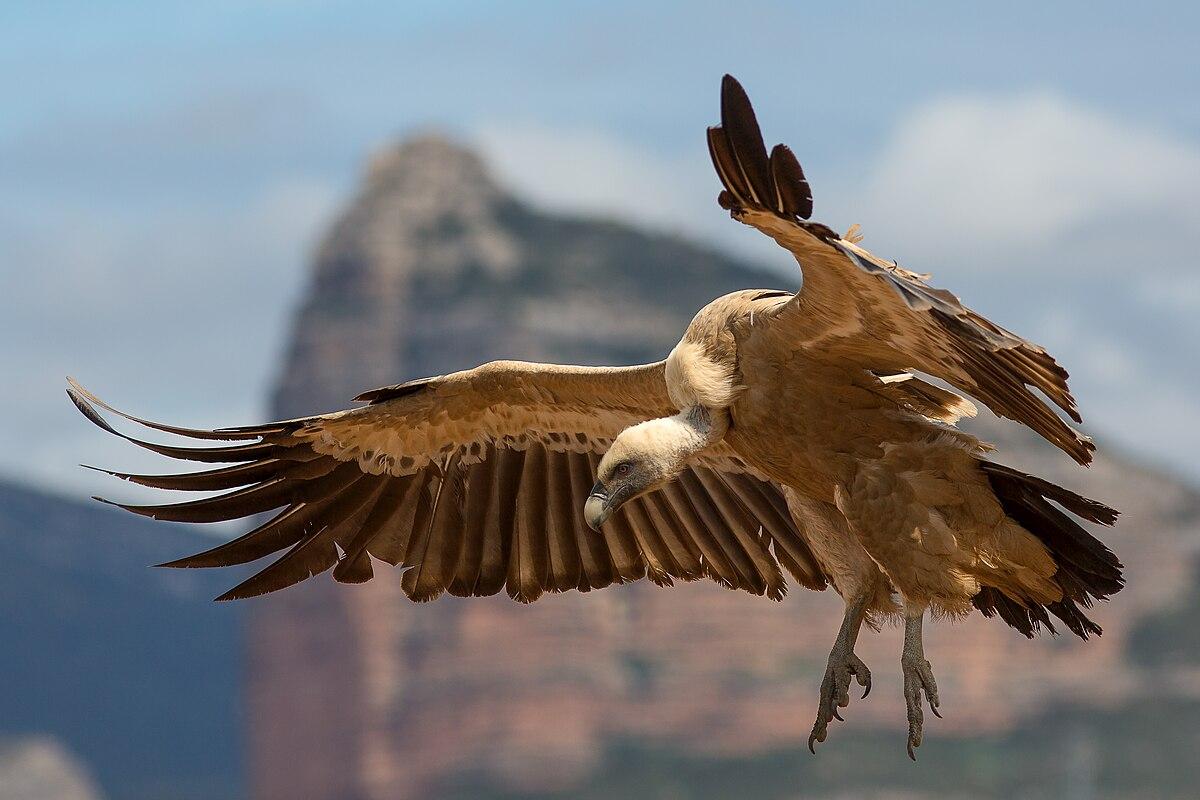
Griffon vultures are large birds of prey found in Europe, Asia, and Africa. They have a pale head, broad wings, and a short tail. They are known for their scavenging behavior, feeding primarily on carrion.
| Height | 37 to 43 inches (95 to 110 cm) |
|---|---|
| Weight | 14 to 25 pounds (6.4 to 11.3 kg) |
| Region of Habitat | Europe, Asia, Africa |
| Scientific Name | Gyps fulvus |
| Place of Origin | Southern Europe, Northern Africa |
| Feeding Habits | Scavenger primarily feeds on carrion |
| What Sound They Make | Hissing, grunting |
Fun Facts:
- Griffon vultures have a wingspan of up to 9 feet, allowing them to soar effortlessly for long distances.
- They have excellent eyesight and can spot a carcass from several kilometers away.
- Griffon vultures play a crucial role in their ecosystem by cleaning up dead animals.
15. Musk Deer

Musk deer are small, solitary deer found in the mountainous forests of Asia. They are known for their elongated canine teeth and the musk gland in males, which is highly valued for its use in perfumes.
| Height | 20 to 28 inches (50 to 70 cm) at the shoulder |
|---|---|
| Weight | 15 to 37 pounds (7 to 17 kg) |
| Region of Habitat | Asia |
| Scientific Name | Moschus |
| Place of Origin | Mountainous forests of Asia |
| Feeding Habits | Herbivorous |
| What Sound They Make | Whistle, bark |
Fun Facts:
- Male musk deer have elongated canine teeth that can grow up to 3 inches long.
- They are excellent jumpers and can leap over obstacles with ease.
- Musk deer are highly elusive and primarily nocturnal, making them difficult to study in the wild.
16. Wolverine
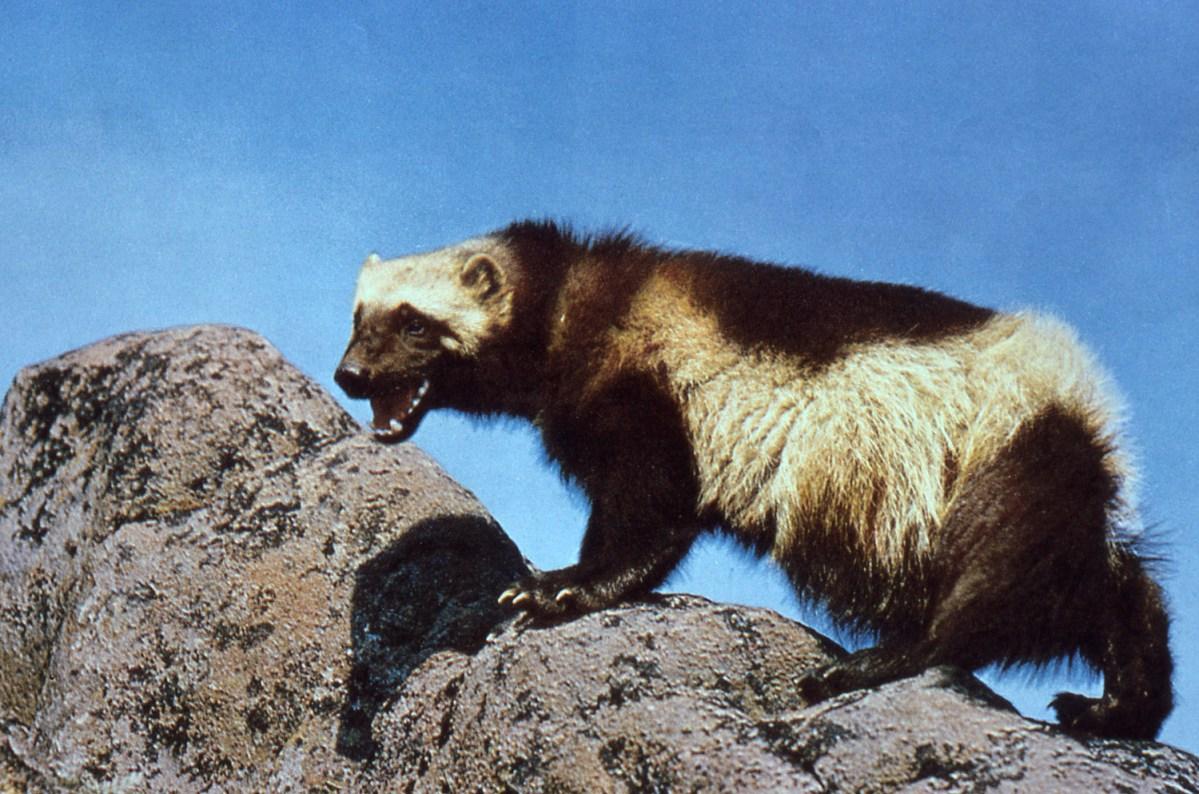
Wolverines are muscular, solitary mammals known for their strength and ferocity. They inhabit the northern boreal forests and mountainous regions of North America and Eurasia.
| Height | 14 to 18 inches (36 to 46 cm) at the shoulder |
|---|---|
| Weight | 20 to 55 pounds (9 to 25 kg) |
| Region of Habitat | North America, Eurasia |
| Scientific Name | Gulo gulo |
| Place of Origin | Boreal forests and mountains of the Northern Hemisphere |
| Feeding Habits | Carnivorous |
| What Sound They Make | Growl, snarl |
Fun Facts:
- Wolverines have powerful jaws and sharp claws that allow them to crush bones and tear through frozen meat.
- They have a keen sense of smell and can detect prey or carrion buried under deep snow.
- Wolverines are known for their tenacity and can take down prey much larger than themselves.
17. Lynx

Lynx are medium-sized wild cats with distinctive tufted ears and a short tail. They inhabit the forests and mountainous regions of Europe, Asia, and North America.
| Height | 19 to 28 inches (48 to 71 cm) at the shoulder |
|---|---|
| Weight | 18 to 64 pounds (8 to 29 kg) |
| Region of Habitat | Europe, Asia, North America |
| Scientific Name | Lynx |
| Place of Origin | Forests and mountains of the Northern Hemisphere |
| Feeding Habits | Carnivorous |
| What Sound They Make | Meow, growl, hiss |
Fun Facts:
- Lynx have large, padded paws that act like snowshoes, allowing them to walk on top of deep snow.
- They have excellent night vision and are primarily nocturnal hunters.
- Lynx are solitary animals, and they mark their territory with scent markings and vocalizations.
18. Himalayan Monal (Impeyan Pheasant)

The Himalayan monal, also known as the Impeyan pheasant, is a brightly colored bird found in the Himalayan forests. Males have iridescent plumage with hues of blue, green, and red, while females are more subdued in color.
| Height | 26 to 29 inches (66 to 74 cm) |
|---|---|
| Weight | 3 to 5 pounds (1.4 to 2.3 kg) |
| Region of Habitat | Himalayan forests |
| Scientific Name | Lophophorus impejanus |
| Place of Origin | Himalayas |
| Feeding Habits | Omnivorous |
| What Sound They Make | Whistle, cackle |
Fun Facts:
- The male Himalayan monal’s colorful plumage makes it one of the most striking birds in the world.
- They have strong legs and are capable of digging through snow to find food.
- Himalayan monals are the national bird of Nepal.
19. Bharal (Blue Sheep)
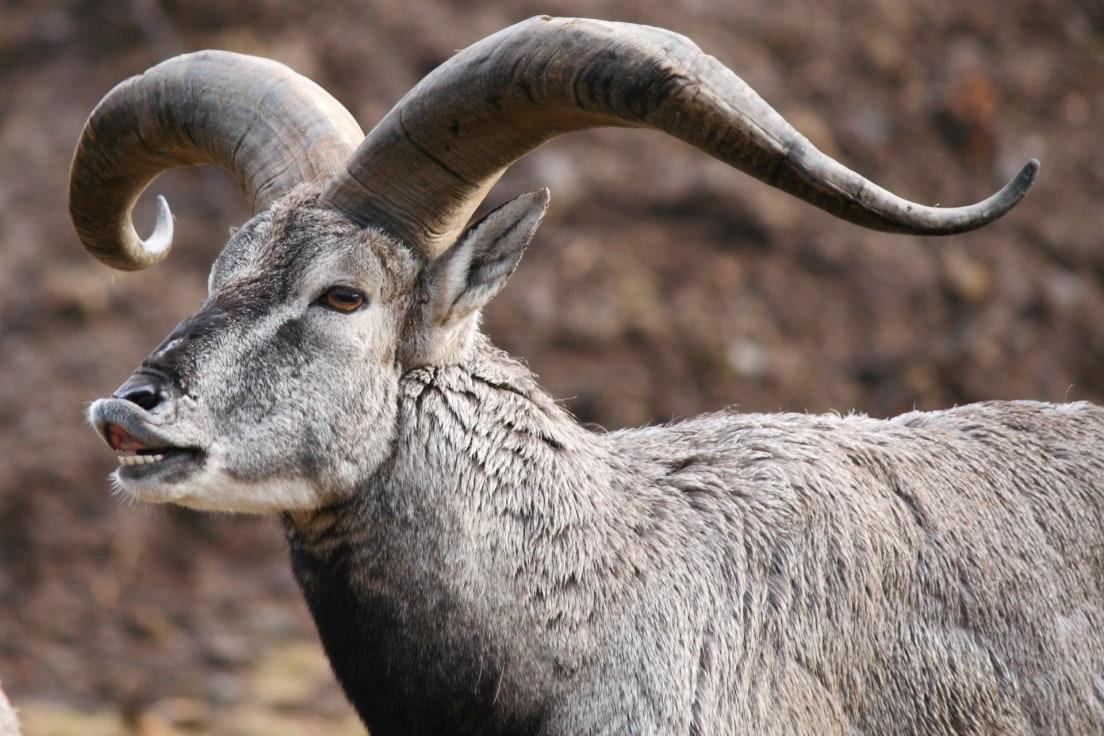
Bharal, also known as blue sheep, are found in the high mountains of the Himalayas.
They have a bluish-gray coat that helps them blend into the rocky terrain.
| Height | 27 to 35 inches (69 to 89 cm) at the shoulder |
|---|---|
| Weight | 77 to 165 pounds (35 to 75 kg) |
| Region of Habitat | Himalayas |
| Scientific Name | Pseudois nayaur |
| Place of Origin | Himalayan mountains |
| Feeding Habits | Herbivorous |
| What Sound They Make | Bleat |
Fun Facts:
- Bharal are excellent climbers and can navigate steep, rocky slopes with ease.
- They have a unique adaptation in their hooves that provides a strong grip on rocky surfaces.
- Bharal are social animals and often form large herds.
20. Markhor

Markhor are large wild goats found in the mountainous regions of Central Asia. They are known for their impressive twisted horns, which can grow up to 5 feet long in males.
| Height | 26 to 45 inches (66 to 114 cm) at the shoulder |
|---|---|
| Weight | 70 to 240 pounds (32 to 110 kg) |
| Region of Habitat | Central Asia |
| Scientific Name | Capra falconeri |
| Place of Origin | Mountain ranges of Central Asia |
| Feeding Habits | Herbivorous |
| What Sound They Make | Bleat, grunt |
Fun Facts:
- Markhor are skilled climbers and can navigate steep, rocky terrains with ease.
- They have a keen sense of smell and can detect predators from a distance.
- Markhor is the national animal of Pakistan.
21. Rock Hyrax
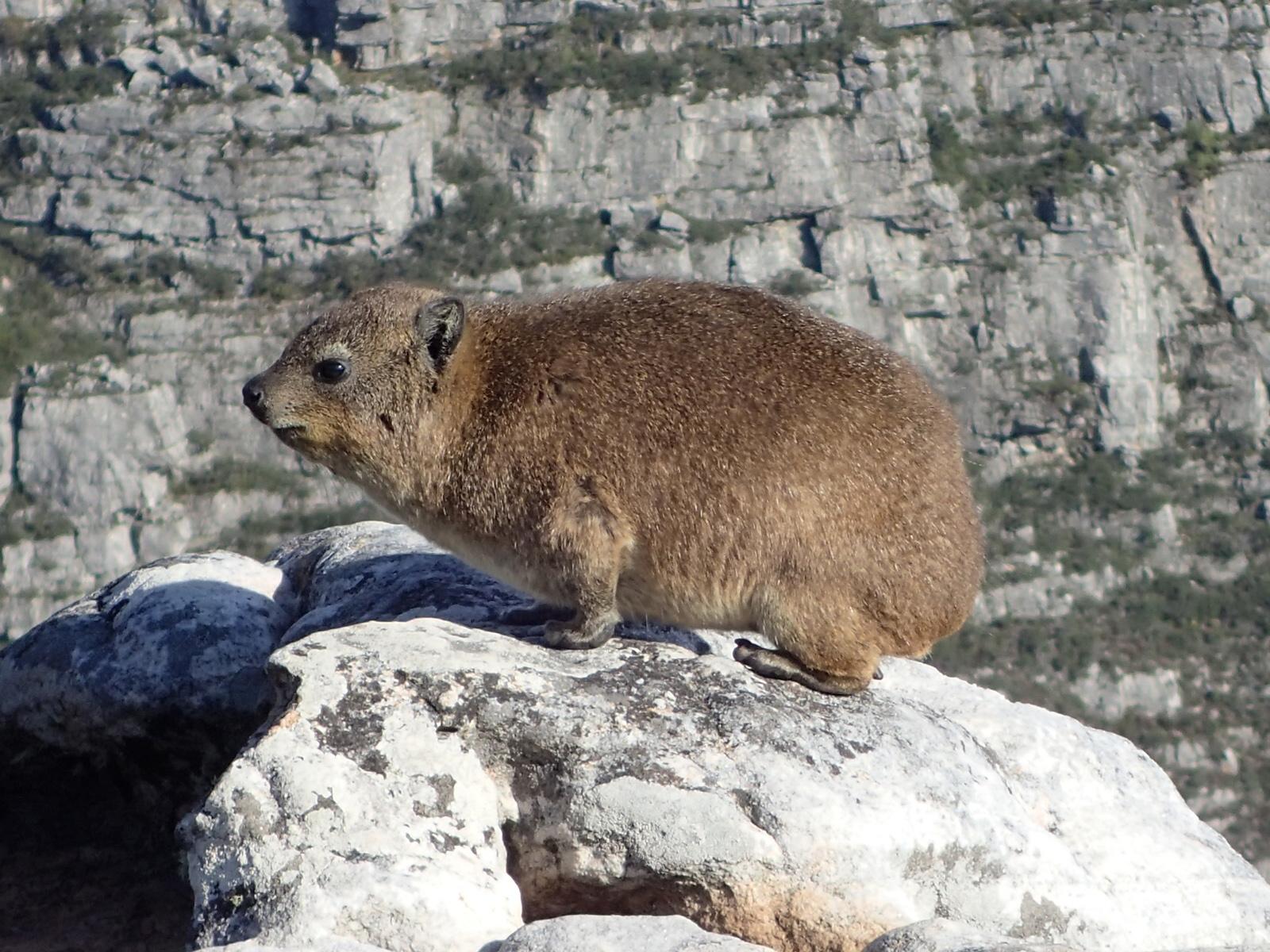
Rock hyraxes are small, herbivorous mammals found in Africa and the Middle East. They have a compact, rounded body, short legs, and a short tail. Despite their small size, they are closely related to elephants.
| Height | 8 to 12 inches (20 to 30 cm) at the shoulder |
|---|---|
| Weight | 4 to 12 pounds (1.8 to 5.4 kg) |
| Region of Habitat | Africa, Middle East |
| Scientific Name | Procavia capensis |
| Place of Origin | Rocky outcrops and cliffs in Africa and the Middle East |
| Feeding Habits | Herbivorous |
| What Sound They Make | Chirp, whistle, grunt |
Fun Facts:
- Rock hyraxes have specialized pads on their feet that help them grip rocky surfaces.
- They live in colonies and use vocalizations to communicate with each other.
- Rock hyraxes are closely related to elephants and manatees despite their small size.
22. Lammergeier (Bearded Vulture)
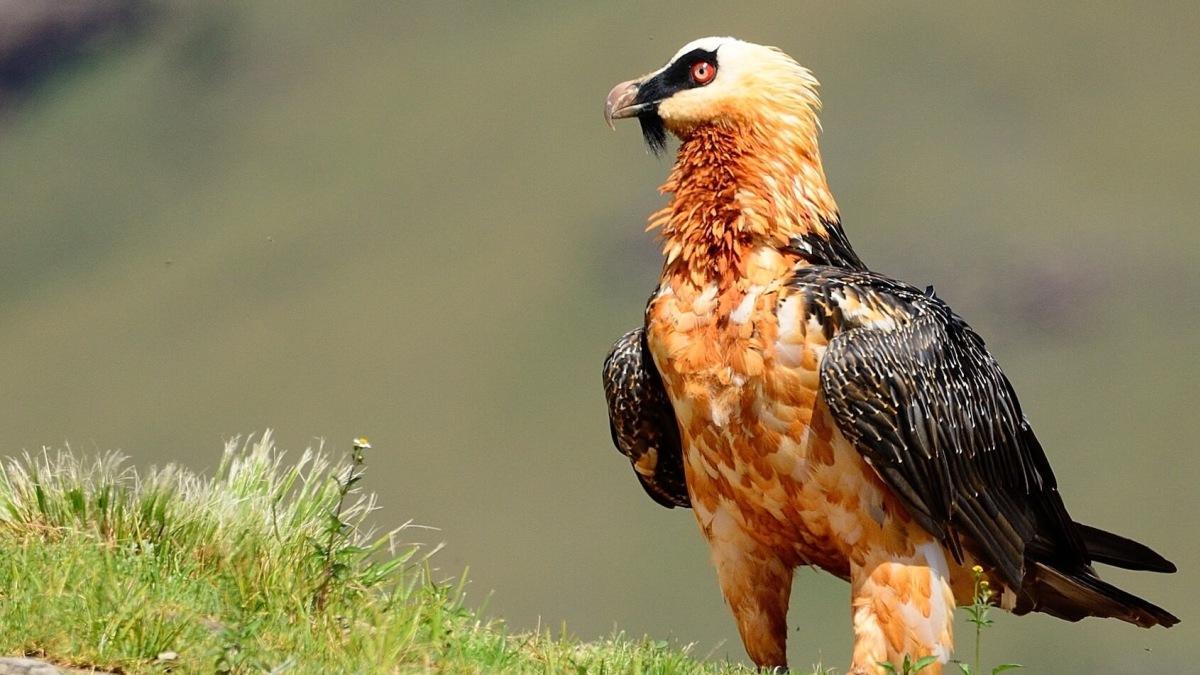
The lammergeier, also known as the bearded vulture, is a large bird of prey found in mountainous regions of Europe, Asia, and Africa.
It has a distinctive appearance, with a beard-like tuft of feathers on its chin.
| Height | 37 to 49 inches (95 to 125 cm) |
|---|---|
| Weight | 10 to 15 pounds (4.5 to 7 kg) |
| Region of Habitat | Europe, Asia, Africa |
| Scientific Name | Gypaetus barbatus |
| Place of Origin | Mountainous areas in Europe, Asia, and Africa |
| Feeding Habits | Scavenger primarily feeds on bones |
| What Sound They Make | Whistling, croaking |
Fun Facts:
- Lammergeiers have a wingspan of up to 9 feet, making them one of the largest birds of prey.
- They are known for their unique feeding habit of dropping bones from great heights to break them open and access the marrow.
- Lammergeiers have a distinctive appearance with a beard-like tuft of feathers on their chin.
23. Snowshoe Hare

Snowshoe hares are large, herbivorous mammals found in North America’s boreal forests and mountainous regions.
They are known for their large, fur-covered feet that help them move on top of deep snow.
| Height | 16 to 20 inches (41 to 51 cm) |
|---|---|
| Weight | 2 to 4 pounds (0.9 to 1.8 kg) |
| Region of Habitat | North America |
| Scientific Name | Lepus americanus |
| Place of Origin | Boreal forests and mountains of North America |
| Feeding Habits | Herbivorous |
| What Sound They Make | Squeak, grunt |
Fun Facts:
- Snowshoe hares change color with the seasons, turning white in winter to blend in with the snow and brown in summer to blend in with the ground.
- They have large, furry feet that act like snowshoes, helping them move on top of deep snow.
- Snowshoe hares are an important prey species for many predators, including lynxes and owls.
24. Marmot

Marmots are large ground squirrels found in the mountainous regions of North America, Europe, and Asia.
They have a stout body, short legs, and a bushy tail. Marmots are known for their loud whistling calls.
| Height | 18 to 24 inches (46 to 61 cm) |
|---|---|
| Weight | 10 to 18 pounds (4.5 to 8.2 kg) |
| Region of Habitat | North America, Europe, Asia |
| Scientific Name | Marmota |
| Place of Origin | Mountainous regions of North America, Europe, and Asia |
| Feeding Habits | Herbivorous |
| What Sound They Make | Whistle |
Fun Facts:
- Marmots hibernate for up to 8 months a year in burrows that they dig themselves.
- They have a social structure and live in colonies with a dominant pair.
- Marmots use their sharp claws to dig complex burrow systems.
25. Ring-tailed Lemur

Ring-tailed lemurs are small primates found in the mountainous regions of Madagascar.
They have distinctive black and white rings on their tails and are known for their social behavior.
| Height | 15 to 18 inches (38 to 46 cm) |
|---|---|
| Weight | 5 to 7 pounds (2.3 to 3.2 kg) |
| Region of Habitat | Madagascar |
| Scientific Name | Lemur catta |
| Place of Origin | Mountainous regions of Madagascar |
| Feeding Habits | Omnivorous |
| What Sound They Make | Meow, purr, grunt |
Fun Facts:
- Ring-tailed lemurs use their long tails for balance and communication.
- They are highly social animals and live in groups called troops.
- Ring-tailed lemurs spend a lot of time on the ground, unlike most other lemur species.
26. Black Bear
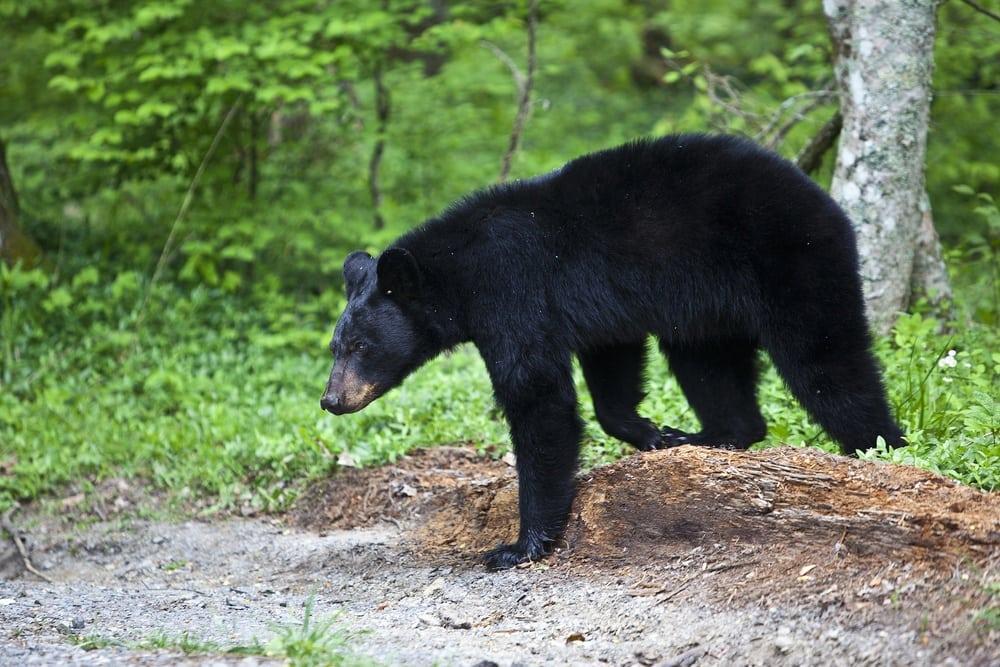
Black bears are medium-sized bears found in the forests and mountainous regions of North America.
They have a stocky build, short tails, and black fur, though some can have brown or cinnamon-colored fur.
| Height | 2.5 to 3 feet (0.76 to 0.91 meters) at the shoulder |
|---|---|
| Weight | 200 to 600 pounds (91 to 272 kg) |
| Region of Habitat | North America |
| Scientific Name | Ursus americanus |
| Place of Origin | Forests and mountains of North America |
| Feeding Habits | Omnivorous |
| What Sound They Make | Growl, grunt, snort |
Fun Facts:
- Black bears are excellent climbers and can often be found in trees.
- They have a keen sense of smell and can detect food from miles away.
- Black bears are generally solitary animals, except for females with cubs or during mating season.
Final Words
Whoa! What a wild ride through the world of mountain animals! We’ve climbed high and low to discover these awesome altitude experts.
From the sneaky snow leopard to the whistling marmot, our list of mountain animals shows just how creative nature can be.
These incredible creatures remind us that you can make a home just about anywhere with the right skills and courage – even on the chilliest, rockiest mountain peaks!
So the next time you see a tall mountain on TV or in a book, remember it’s not just a big pile of rocks.
It’s a sky-high home to some of the coolest animals on Earth! Keep exploring, young wildlife detectives, because the mountains are full of more amazing animal secrets waiting to be discovered!
